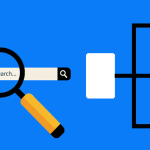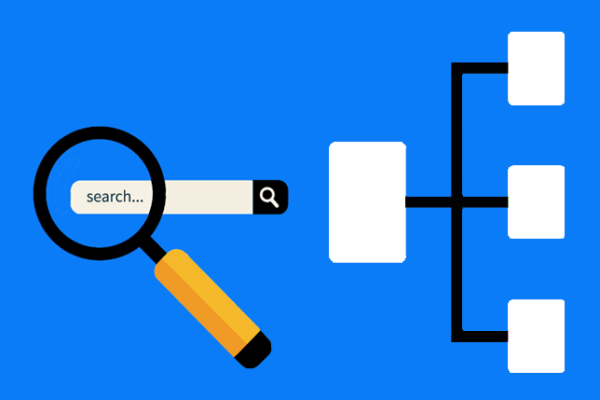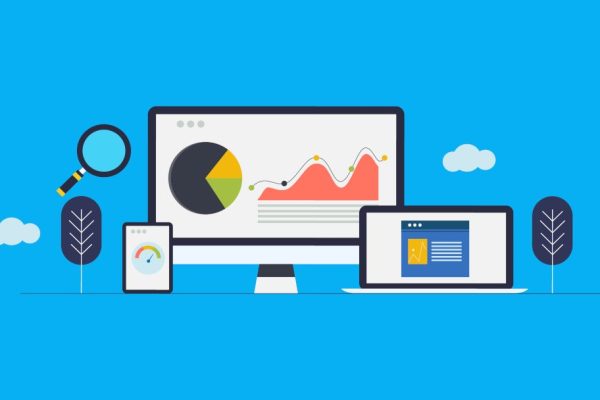On-page SEO plays an important role in the SEO-oriented optimization of sites. On-Page SEO means optimizing all the details of the site and the contents on the site in accordance with SEO.
What is On-Page SEO?
The number of criteria to be taken into account in the On-Page SEO steps that must be taken while optimizing the site in accordance with SEO is over 100. On-Page SEO aims to increase the organic traffic of the site by following all these criteria correctly.
On-Page SEO not only keeps your site at the forefront of search results, it also helps reduce the budget you spend on promoting your business site.
Why is On-Page SEO Important? (More Sales, More Traffic!)
The advantages of On-Page SEO are many. In order to reach the answers to this question, companies need to successfully implement SEO work on their websites. Under these conditions, it can be seen what the necessary studies do and what advantages they provide. In general, the advantages offered to the website in on-page SEO, which is the whole of the SEO work applied within the site, consist of the following:
- It is ensured that the website appears higher in search engine results.
- The pages on the website are indexed by search engine robots in a shorter time and faster.
- Since the original and comprehensive content is determined by the search engine as high quality, it is brought to the forefront due to its compliance with the algorithms.
- If the right SEO techniques and strategies are applied, a much faster and more effective marketing can be achieved.
- The cost of on-page SEO work is quite reasonable compared to other digital marketing techniques and channels.
- As can be seen, on-page SEO studies have a great importance in the success of a website on the digital platform. It is absolutely necessary to pay attention to the fact that SEO works are carried out by experts in the field.

How To Do On-Page SEO?
On-Page SEO means optimizing your site for Google. On-Page SEO measures are optimized by considering the speed of your site, codes, content within the site, the structure of the site and links.
At the end of On-Page SEO steps, you will have a site liked by the user. This is one of the most important points for your site to attract more customers and generate more sales.
The steps taken while performing On Page SEO should be done according to certain criteria and rules. Each site provides powerful analysis and implementation along with the On-Page SEO step.
Here are our 3 steps to follow when doing On-Page SEO:
- On-Page SEO Analysis
- On-Page SEO Regulations
- Optimization of the site in accordance with the user and search systems
In the article we have prepared, you will learn how many steps should be taken during SEO time, and how you should optimize your site in accordance with certain criteria.
Page Titles (Meta Title)
Page titles are one of the most essential elements for On-Page SEO. While doing SEO, consider the following steps to implement SEO-friendly optimization of page titles:
1) You should use the words you target in the titles of the page correctly. Open words should be placed in the left hand of the page titles.
2) It is necessary for the titles of the pages to be short but explanatory. You should always avoid long page titles and use your opening word in the page title.
3) The keywords you use in the titles of the pages must be words that bring traffic.
Content Titles (Post Title)
In order to attract the interests of the users who visit your site, you must use the titles correctly in the titles located on your site. For On-Page SEO, content titles are one of the most important elements for optimizing properly. The criteria that you should show when optimizing the content titles are as follows:
1) Each page must have a title title that has an ədəd H1 teqinə. H1 teqləri is one of the most essential elements to let the search systems know what the subject of your content is related to. By looking at this, it is necessary to avoid the great use of H1 teachings.
2) It is important to use the keywords you use for your quota in the titles of the quota.
3) Content titles should be diqqət kəkən, interesting and user-oriented.
Headings & Tags
Subject headings (H tags) are one of the most important elements for the content you place on your site. Subject headings are divided into different groups as h1, h2, h3, h4, h5, h6. It is very important to correctly divide the content on your website and to create a content that is readable and eye-catching to the user.
Thanks to the H tags, you will be able to list the content hierarchy correctly. Criteria that you should consider when making use of the subject headings:
1) Only one H1 text should be used for each page.
2) In the titles of the subject, words should be used.
3) In the context of the content, at least one word H1, three times H2, and four words H3 must be used.
4) It is very important to use the H statements with the correct order.
Meta Description
One of the most important elements that escapes during On-Page SEO time is the “meta description” new meta description element. By optimizing the correct meta description, you can know that your search results pages are related to which subject. As a result of this, you can come out at the top of the search results.
Here are some of the criteria you should follow for optimizing the correct meta description:
- Your meta descriptions should be in the range of 155-160 characters, and the description length should not exceed 160 characters.
- Key words used in the content should also be placed in the meta descriptions.
- Meta descriptions should be in a format that gives brief information about the content.
Site Speed
For the users included in your site, the speed of your site is very important. No user wants to waste time on a slow-running site. Page speed isn’t just for users, it’s also an essential element for Google and other search systems.
Mobile Usability
In conjunction with the development of technology, users make their comments on their mobile devices. For this reason, all search systems, especially Google, give more importance to mobile-friendly sites.
Sitemap
Although sitemaps are not considered an important factor by users, they are very important for search engines to easily see your site. Having the well documented sıtemap allows you to make your pages easily viewed by Google and added to search results.
Canonical
One of the most important elements of On-Page SEO is canonical links. If you are able to access content on your site through different URLs, search engines will take that URL as duplicate content. As a result, you may experience decreases in site traffic and even the disappearance of your site link from search results.
Breadcrumb
Breadcrumb is used to show users where they are when browsing your site. For example, “shoes>women’s shoes>women’s boots”
Content
It is important to optimize your content in an SEO-friendly way to bring your site to the forefront of search results. During On-Page SEO, you need to create unique content to make sure that the right keywords are used in the content.
Session Time
One of the goals of On-Page SEO is to extend the stay of users who visit your site with the right content and link structure. Creating unique content to attract the user’s interest, bringing other content on your site to the user is one of the important conditions to increase the length of stay on the page.
URL Structure
The correct URL structure of the pages on your site, the choice of URLs according to the topic and keyword is one of the other elements that strengthen the position of the page in the search results. In particular, using a keyword within a URL is a very important condition in terms of showing the user what the page is related to and helping search results understand your page.
404 Errors
Having links that don’t work on your page is a negative thing for search engines. It is important to redirect pages that do not work and give 404 errors to a page similar to 301 redirects.
Internal Linking
Internal linking is a very important element for SEO. You can show Google that your site attracts the attention of users with internal linking, which you can use to make the transitions between your pages easier and to move the user around your site.
How to Do On-Page SEO Analysis?
For On-Page SEO you first need to do the right site analysis. Proper SEO analysis will inform you about the problems of your site and what you need to do.
Tools You Can Use For On-Page SEO Analysis
- Screaming Frog SEO Spider
- Google Search Console
- Google Page Speed
- Semrush
- Ahrefs
- Google Analytics
On-Page SEO Criterias You Should Consider
Here are the criterias you should look for when doing SEO analysis on your site. You can also identify problems on your site by paying attention to the criteria we mentioned during the analysis. Then you can get to the forefront of search results by optimizing the problems you identify in accordance with SEO.
- Unique content
- Site Speed
- The correct H tag hierarchy
- Compatibility for mobile use
- The correct URL structure
- 301 Redirection of inactive pages
- Site map
- Robots.txt
- Page optimization
On-Page SEO in WordPress
WordPress-based sites have many “plugins” that can make your job easier to implement On-Page SEO. With these plugins, you can not only get positive results in the On-Page SEO processes of the site, but also reduce the time you spend on SEO.
SEO plugins you can use in WordPress:
- Rank Math
- Yoast Seo
- Jetpack
- Redirection
- Easy Table of Contents
- AMP
On-Page SEO Solutions
After taking the steps you need to take regarding On-Page SEO, take a look at the points below.
1) Reduce the volume by optimizing high-volume images that take up a lot of space on your site.
2) Increase the speed of your site and remove elements from your site that could cause your site to run slower.
3) Optimize your URL structure according to your keywords.
4) Write your keywords a maximum of 2 times in your meta descriptions.
Why is On-Page SEO Important?
Imagine creating an aesthetically pleasing website and it’s perfect. But assume that your aesthetic website doesn’t show up in the rankings when it comes to search engine rankings. Or maybe your website is not indexed by search engines because it misses the most important elements. This is where On-Page optimization comes in. On-Page optimization allows optimizing metrics and allowing search engines to understand what your website is all about.
On-Page SEO also helps search engines determine whether the site’s content is relevant to the search query. As Google focuses more on user intent than ever before, it’s critical to optimize all in-page elements according to industry best practices. For this reason, On-Page SEO will help you increase your rankings in the SERPs, as well as gain better user audience attraction and higher conversions.
You also have more control over optimizing your On-Page elements compared to off-page SEO, which relies primarily on external signals. Thus, you can achieve more effective and simple results.
What Are The Benefıts of On-Page SEO?
Thanks to the arrangements made, your website is visited more frequently by search engine bots and since it is in a structure that search engine bots can easily detect, the content you include on your site is indexed faster in search engines.
Since the original articles you share on your site will be indexed quickly, they will rank higher in the search results.
With a solid setup, you can make a long-term gain with a relatively lower cost compared to other marketing channels.















![Effective Steps to Build Natural Backlinks – [5 Steps]](https://elseo.us/wp-content/uploads/2022/06/backlinks-600x400.webp)
